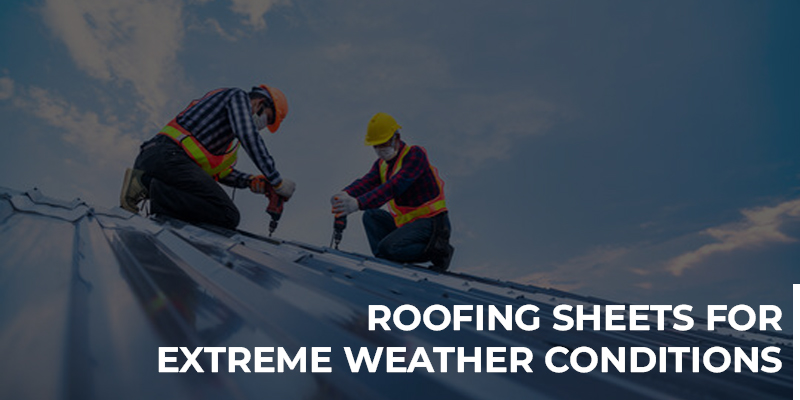When protecting a building from the elements, roofing plays a crucial role. Choosing the right roofing sheets is paramount in regions prone to extreme weather conditions such as hurricanes, heavy rainfall, or intense heat. These conditions demand roofing materials that offer exceptional resilience and protection. This blog will explore the importance of roofing sheets designed for extreme weather conditions, highlighting their key features and benefits.
Understanding the Challenges of Extreme Weather
Extreme weather conditions pose significant challenges to the structural integrity of buildings. High winds can cause uplift forces, heavy rainfall can lead to water leakage, and intense heat can result in thermal expansion. To withstand these challenges, roofing sheets must be specifically engineered and designed for durability and resilience. They must resist wind uplift, prevent water infiltration, and withstand temperature variations without compromising performance.
The Resilience of Metal Roofing Sheets
Metal roofing sheets are widely recognised for their exceptional resilience in extreme weather conditions. Materials such as steel or aluminium offer high strength and durability, allowing them to withstand strong winds and resist impact damage. Metal Roofing In Chennai is also highly fire-resistant, providing an added layer of protection. Additionally, metal roofs can be designed with special profiles and interlocking systems to enhance their resistance to water penetration, reducing the risk of leaks during heavy rainfall.
Impact of UV Resistance and Heat Reflectivity
Roofing sheets with UV resistance and heat reflectivity become crucial in regions with intense heat and prolonged sun exposure. UV-resistant coatings or finishes applied to roofing sheets can protect against the degrading effects of ultraviolet radiation, preventing premature deterioration. Heat-reflective coatings or light-coloured roofing sheets help to reduce heat absorption, keeping the building cooler and reducing energy consumption for air conditioning. These features contribute to the longevity and energy efficiency of the roofing system, particularly in areas with high temperatures.
Special Considerations for Hurricane-Prone Regions
Hurricanes present unique challenges for roofing systems. High winds and flying debris can cause severe damage to buildings. Roofing sheets designed to meet wind uplift requirements are essential in hurricane-prone regions. These sheets often have specialised fastening systems, enhanced structural strength, and interlocking mechanisms to resist the intense forces exerted by hurricanes. Additionally, impact-resistant coatings or laminates can provide extra protection against flying debris, reducing the risk of penetration and subsequent water damage.
Extreme weather conditions demand roofing sheets prioritising resilience and protection. Choosing roofing materials engineered explicitly for these conditions is crucial, whether it’s high winds, heavy rainfall, intense heat, or multiple factors. Z Purlin Manufacturers says that with their durability, wind resistance, UV protection, and heat reflectivity, metal roofing sheets are often the preferred choice for withstanding extreme weather and providing long-lasting protection to buildings.

